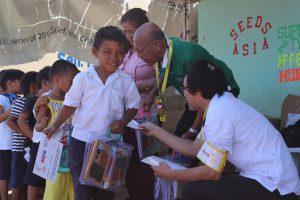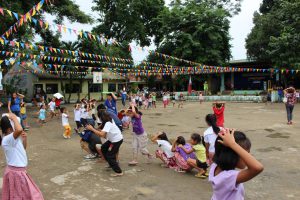The Collective Memories of Disasters in Asia: Typhoon Yolanda (Haiyan)
We are all “disaster-affected” – recent events have shown that disasters can strike anyone, anytime, anywhere!
On 7th November 2013, the Typhoon Yolanda (internationally known as “Haiyan”) made landfall in the Philippines and brought massive storms and storm surges, hitting the central Philippines region of Visayas. According to World Bank, it caused over 6,300 deaths and led to 2.3 million people dropping below the poverty line. Unlike Luzon in northern Philippines, which experiences frequent typhoons every year, people of the Visayas were under the belief that their region was “absolutely safe,” without any record of major typhoons or earthquakes for decades. However, in October 2013 the Bohol and Cebu islands in the Visayas were shaken by a magnitude 7.2 “Bohol Earthquake”, and within a month, Leyte and those islands were severely damaged by the Typhoon Yolanda which is said to have been one of the deadliest in the country’s history. 2013 turned out to be the most shocking one for the people of the Visayas, which reminded them that they were not living in an absolutely safe region anymore.
After the Typhoon Yolanda, SEEDS Asia initiated an emergency support operation for the Philippines’ Department of Education and local schools. This was followed by long-term projects – initially to institutionalize disaster risk reduction education by integrating it into the local curriculum from 2014, and later, to enhance disaster risk reduction and management of schools from 2017. Both projects were implemented in partnership with the Hyogo Prefectural Board of Education, which has continued to utilize lessons learned from its experience of the 1995 Great Hanshin-Awaji Earthquake. During the projects, local people told SEEDS Asia “I was panicking when the earthquake occurred and right after I was out of the building, I returned inside again without a proper safety check,” and “I had always believed that there would be no typhoon in my community.” These testimonies prove that people were not prepared for those disasters. However, after over five years of project implementation, many local schools started to face unexpected and unpredicted disasters. Each school has now become more aware of the need for risk analysis of their locality, and has started disaster drills with worst case scenarios in coordination with stakeholders for possible disaster response. This is indeed a great outcome!
Utilizing lessons from past disasters is an important principle of disaster risk reduction initiatives, but we are in an era where we have to face disasters that we thought were never possible in the past. SEEDS Asia will continue to work closely with communities so they are able to anticipate “unexpected” impacts of disasters. We hope our step by step efforts will contribute to reduced damage in what is called “once in hundreds of years” kind of disasters.

